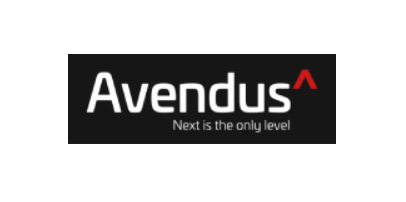India’s top housing finance company becomes fully compliant with our LCR automation solution

About the client
Our client is one of the largest housing finance companies in India with a loan book of over 2 lakh crores. The company provides long term finance to individuals for the purchase or construction of house or flat for residential purposes in India. They also provide finance on existing property for business or personal needs and also give loans to professionals for purchase/construction of clinics,nursing homes, diagnostic centers, office space and also for purchase of equipment. The company also provides finance to builders and developers engaged in the business of construction of houses or flats for residential purpose and to be sold by them.The client has over 280 offices in India across different geographies and one abroad.
Business challenge
In the backdrop of the global financial crisis that started in 2007, the Basel Committee on Banking Supervision (BCBS) proposed certain reforms to strengthen global capital and liquidity regulations with the objective of promoting a more resilient banking sector. In this regard, the Basel III rules text on liquidity – “Basel III: International framework for liquidity risk measurement, standards and monitoring” was issued in December 2010 which presented the details of global regulatory standards on liquidity. Two minimum standards viz. Liquidity Coverage Ratio (LCR) and Net Stable Funding Ratio (NSFR) for funding liquidity were prescribed by the Basel Committee for achieving two separate but complementary objectives.
Further to this reform, RBI issued the guidelines covering liquidity risk management for NBFCs wherein RBI introduced Liquidity Coverage Ratio (LCR) applicable w.e.f 31st March 2022 on all non‐deposit taking NBFCs with asset size of more than Rs. 5,000 crore. The guidelines aim to maintain a liquidity buffer in terms of LCR by ensuring that they have sufficient High Quality Liquid Asset (HQLA) to survive any acute liquidity stress scenario lasting for the next 30 days.
As per the guideline, LCR is represented by Stock of High‐Quality Liquid Assets (HQLA) divided by Total Net Cash Outflows (stressed outflow less stressed inflows) over the next 30 calendar days. HQLA are defined by RBI as the liquid assets that can be readily sold or immediately convertible into cash at little or no loss of value or can be used as collateral to obtain funds in stress situations. NBFCs are required to disclose information on their LCR every quarter. Further, NBFCs in their annual financial statements under Notes to Accounts, starting with the financial year ending March 31, 2021, shall disclose information on LCR for all the four quarters of the relevant financial year.
In case of our client, daily computation of LCR was a critical operational challenge given that records related to inflows and outflows were with multiple departments in disparate systems & data formats. The composition of HQLA was subject to change and this was being managed in Excel. This data needed to be flexible and part of a system to ensure seamless LCR computation.
Our solution
With our multi-source integration, we were able to create a centralized repository for all of the data. This made it much easier to access and analyze the data.
In addition, we were able to automate the calculations. This means that the calculations are now run at set intervals without the need for any human intervention.
Moreover, given that these calculations need to be done on a daily basis, there was a need to ensure seamless data flow across the system on a daily basis. Our system was programmed for daily automation thereby ensuring significant daily time savings for the client.
Our integrated LCR solution was loaded with the below features to ensure seamless LCR computation and tracking for the client.
- Integration with LMS, Treasury, Investment and Accounting systems: Our system integrated with a client’s existing systems to provide a holistic view of the bank’s liquidity position. This integration helps the client to better track their cash flows and identify potential liquidity risks.
- Definition of high-quality liquid assets and definition of haircuts for each asset: We built access to high quality assets and 30-day inflows and outflows for easy daily computation.Our system can help banks to define high-quality liquid assets (HQLA) and define haircuts for each asset. This information can be used to calculate the bank’s LCR.
- Generation of LCR reports and ratios on a daily and quarterly basis: The system generates LCR reports and ratios on a daily basis and quarterly reports. These reports can help the client to track their LCR over time and identify any potential trends. They can also set up breach alerts so that they are notified if their LCR falls below the required level.
- Projected LCR ratio visibility with breach alerts: Our system provides the client with projected LCR ratios with breach alerts. This information can help them identify potential liquidity risks and take steps to mitigate those risks.

The solution has the following benefits for the client:
- Improved liquidity risk management: Our system helps the client to improve their liquidity risk management by providing a holistic view of the bank’s liquidity position, helping them to identify potential liquidity risks, and tracking their LCR over time.
- Reduced exposure to liquidity shocks: By using our system, the client can reduce their exposure to potential liquidity shocks by identifying and mitigating potential risks.
- Increased compliance with regulatory requirements: Our system can help the client to comply with regulatory requirements, such as the LCR.
- Improved efficiency: Our system can help improve efficiency by automating many of the tasks involved in liquidity risk management.
Outcomes
With our multi-source integrations, we were able to create a centralised repository for the data. Now calculations are run at set intervals without the need for any human intervention. After the spreadsheets were ingested, the rates have been synchronised with daily data inflows across departments in real-time with 100% accuracy making the data more reliable.
The client saw the following results after switching to the new system:
- Time-saving: The system saves users 3 hours per day by automating tasks.
- Completely automated: The system is fully automated, so users don’t have to manually calculate LCR ratios.
- Fully Compliant: The system is 100% regulatory risk-free, so users can be confident that they are compliant.
- Plug and play: The system is easy to use and can be integrated with existing systems using in-built APIs.

LCR is a critical metric for an NBFC both in terms of business continuity and in perspective of regulatory compliance. Through our product we empower the client to calculate LCR seamlessly in real time, ensuring they always stay ahead of the curve, even in the worst of times.






